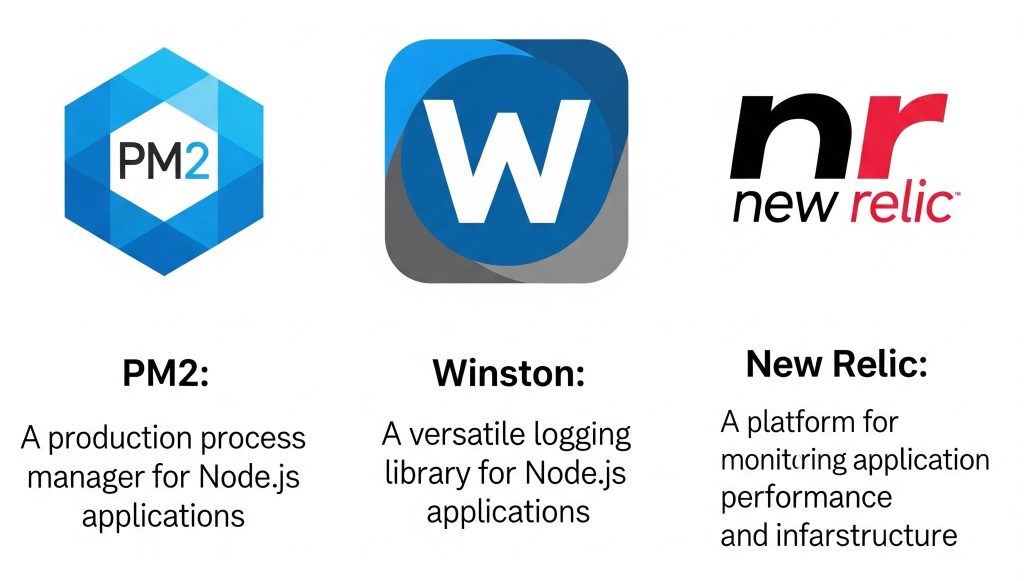Node.js has become a cornerstone of modern backend development. However, building robust Node.js applications requires more than just writing code — it demands thoughtful architecture, performance tuning, error handling, and scalability considerations. In this guide, we’ll cover proven best practices to ensure your Node.js projects are production-ready and resilient.
🧱 1. Use a Modular Folder Structure
A clean, modular folder structure simplifies development and debugging. Break your application into services, controllers, models, routes, and middlewares.
🔹 Tip:
Use tools like express-generator or manually define a structure like:
/controllers
/routes
/models
/services
/middleware
/utils 🔄 2. Handle Asynchronous Code Properly
Node.js uses a non-blocking, event-driven model. Hence, handling async operations properly is crucial.
✅ Use async/await instead of nested callbacks
It makes your code cleaner and easier to maintain. Always wrap await in try/catch to avoid unhandled promise rejections.
try {
const user = await User.findById(id);
} catch (error) {
next(error);
}🔐 3. Secure Your Application
Security is non-negotiable in any web application. Here are some best practices:
✅ Use Helmet.js
Set secure HTTP headers to protect against well-known vulnerabilities.
✅ Validate user input
Use libraries like Joi or express-validator to prevent SQL injection or XSS attacks.
✅ Sanitize data
Avoid storing raw inputs; sanitize all form data before processing.
🔗 OWASP Node.js Security Cheat Sheet
🚫 4. Implement Efficient Error Handling
You should never let your application crash silently. Use centralized error handling.
🔹 Add a global error handler middleware:
app.use((err, req, res, next) => {
res.status(err.status || 500).json({ message: err.message });
});✅ Tip: Avoid using console.log() in production. Instead, use structured logging like Winston or Pino.
⚙️ 5. Use Environment-Based Configurations
Keep your credentials and environment-specific configs out of your codebase.
✅ Use .env and dotenv
PORT=3000
MONGO_URI=mongodb://localhost:27017/app 🔗 Check out our blog on Node.js Environment Setup for Developers
📊 6. Leverage Logging and Monitoring Tools
Logging is essential for debugging, while monitoring helps with uptime and performance tracking.
✅ Tools to Use:
- Winston for logging
- PM2 for process management
- New Relic or Datadog for real-time monitoring

⚡ 7. Optimize Performance with Caching
Heavy DB queries slow down apps. Caching frequently requested data enhances performance significantly.
✅ Use Redis
Store session data, API responses, or counts to serve faster.
redisClient.setex('key', 3600, JSON.stringify(data))✅ 8. Test Early and Test Often
Robust applications are tested thoroughly. Testing helps prevent unexpected behavior post-deployment.
🔹 Types of Testing:
- Unit Testing – test individual modules (e.g., with Jest)
- Integration Testing – test how modules work together
- E2E Testing – test entire workflows (e.g., with Cypress)
🎯 9. Final Thoughts
Building robust Node.js applications isn’t just about functionality—it’s about structure, performance, and maintainability. By implementing these practices, developers can deliver scalable and secure applications, setting a strong foundation for future growth.
Conclusion:
In conclusion, building robust Node.js applications goes beyond writing functional code — it involves adopting best practices that enhance security, scalability, and performance. By organizing your codebase, handling errors gracefully, securing endpoints, optimizing with caching, and ensuring proper testing, you lay the foundation for resilient and maintainable applications. With these practices in place, developers can confidently deliver high-quality solutions ready for real-world challenges.

